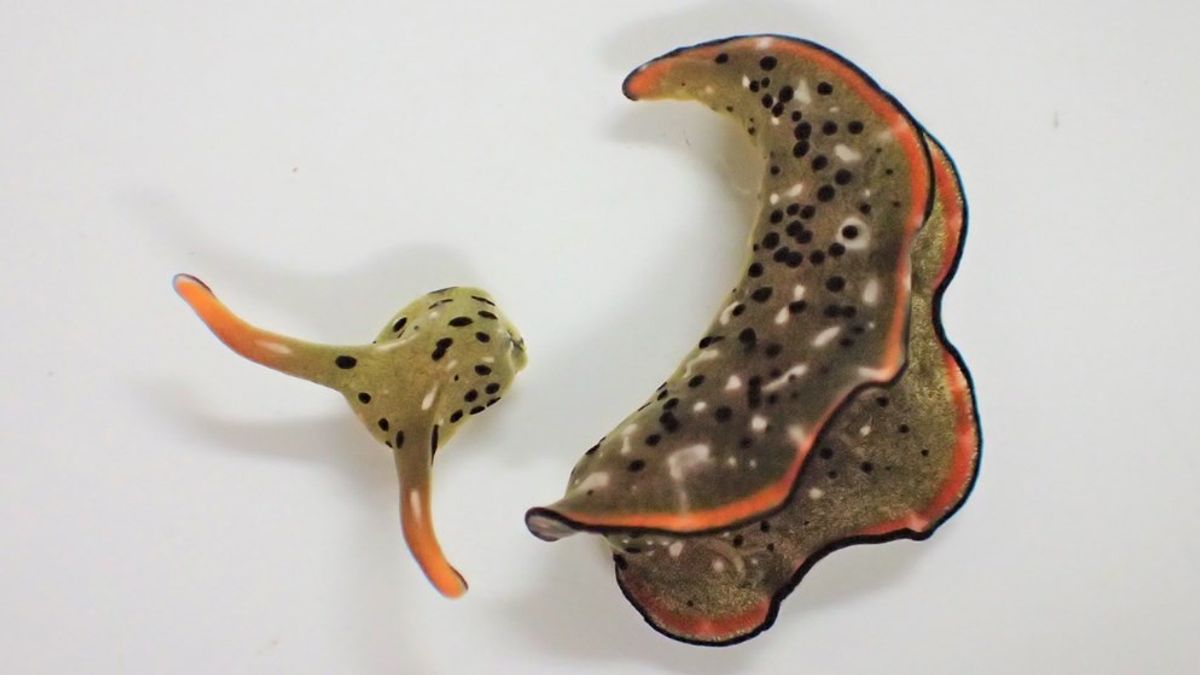JAKARTA - A new study in Japan has revealed that the Elysia marginata sea snail can survive, even without a head. Even the head of this type of sea snail can regenerate to form a new body.
The strange finding was revealed after a researcher found a sea snail specimen stored in the laboratory had no head. Apparently, the sea slug's head moved on its own to eat the algae.
The discovery was researched by Sayaka Mitoh in his research for a Ph.D. while researching marine specimens. Mitoh found that the snail's head, which was separated from its body, was still alive, able to move and eat.
Launching the Slash Gear page, it appears that the head of the sea snail can move and regenerate its new body. While the body of the snail without a head knit back the fiber network at the base of the neck was cut off.
This event is the first discovery in which an animal can remove its head to dispose of its old body. Then, the sea snail grows a completely new body in place of the old one.
[see-also]
- https://voi.id/berita/37520/ilmuwan-tentuk-hiu-yang-bersinar-dalam-gelap-di-lepas-pantai-selandia-baru
- https://voi.id/berita/35903/ilmuwan-australia-tentuk-seni-cadas-terlasi-gambar-kangguru-berusia-17-300-tahun
- https://voi.id/berita/33732/pen Research-tentuk-kehidup-900-meter-di-bawah-es-antartika
[/ see_also]
The researchers found only evidence of decapitation on their own as a method of eliminating parasites on their bodies. In fact, the old body that the snail throws away contains parasites. Meanwhile, the new body is free from parasites.
Scientists studied several sea slugs that decapitated themselves, including one snail that removed its head twice. However, not all sea slugs can release their old bodies as long as they live.
In fact, the old body that has been discarded still receives stimulation when touched. This went on for several months. As for the new body, it takes about three weeks to grow back.
Experts note the ability of sea slugs to sustain themselves using photosynthesis. This is what keeps the snail's head alive and able to roam even though it is separated from its old body. A full study of these findings can be found in the journal Current Biology.
The English, Chinese, Japanese, Arabic, and French versions are automatically generated by the AI. So there may still be inaccuracies in translating, please always see Indonesian as our main language. (system supported by DigitalSiber.id)










